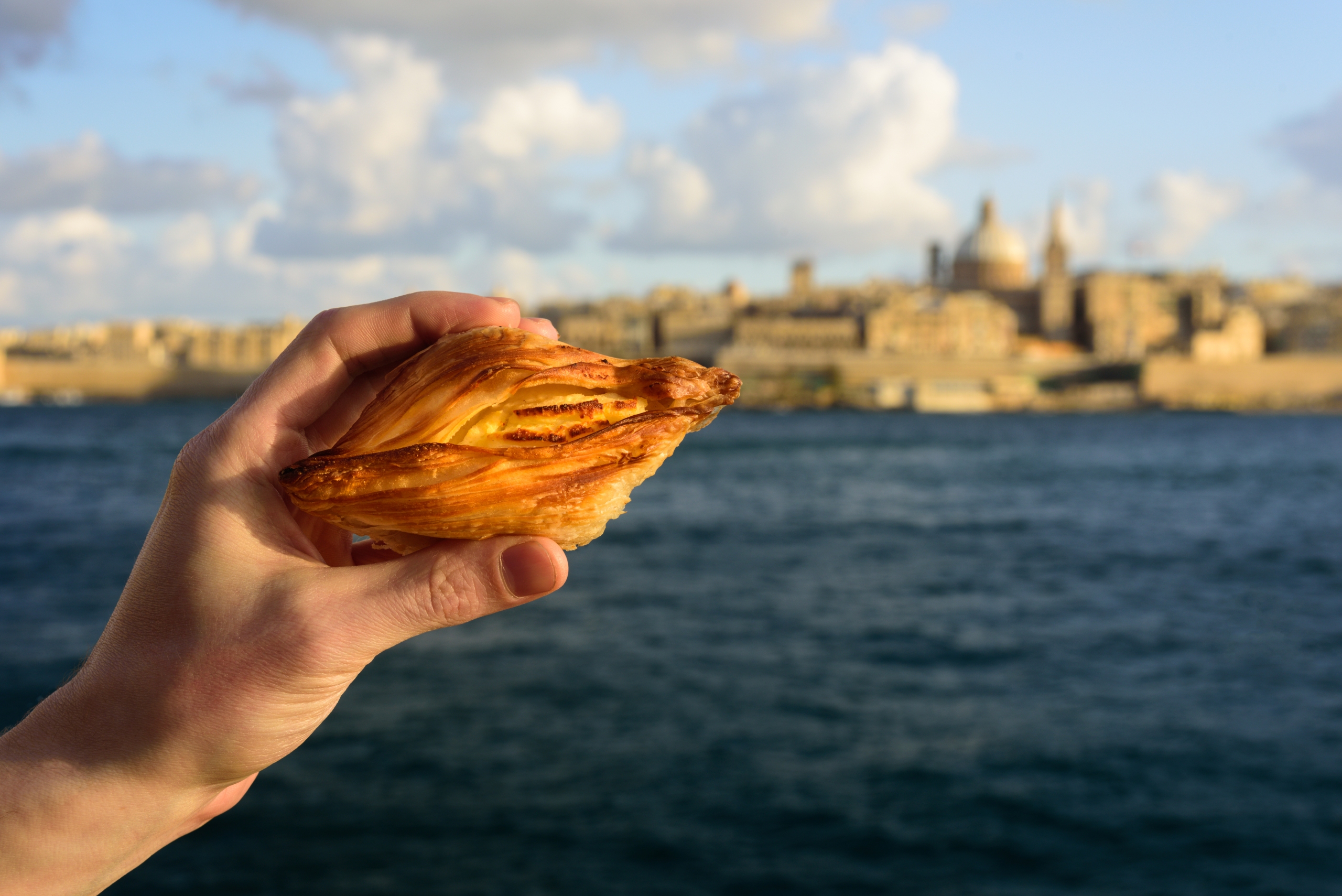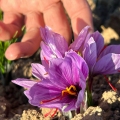Malta, a jewel of the Mediterranean, has long been a cultural crossroads, its strategic location making it a hub for trade, conquest, and pilgrimage. The result is a culinary tradition unlike any other—one that blends the flavors of Europe, North Africa, and the Middle East into dishes rooted in the island’s geography and history. Yet Maltese cuisine is more than a sum of its influences; it shows the islanders’ deep connection to their land, their resourcefulness, and their unbroken two-thousand-year Christian tradition.
For pilgrims, Malta’s gastronomy offers a chance to connect with the rhythms of its past and present. Many of the island’s iconic dishes are tied to the Christian liturgical calendar, transforming meals into markers of faith and celebration. As visitors explore Malta’s diverse food culture, they are experiencing centuries of history and devotion.
The Historical Roots of Maltese Cuisine
Maltese food is a living chronicle of the civilizations that have touched its shores. The Phoenicians brought olives and figs; the Romans introduced honey and wine; and Arab settlers left their imprint in the use of spices, almonds, and citrus. Later, the Knights of St. John brought sophistication to the island’s kitchens, while British colonization added new techniques and ingredients.
Despite these layers of influence, Maltese cuisine is firmly anchored in the island’s resources. Fishermen haul in lampuki (dorado), octopus, and other seafood, while farmers grow tomatoes, marrows, and herbs in the island’s rocky soil. Goats’ milk, used to produce the creamy ricotta that features in many dishes, is another local staple. These ingredients form the backbone of a cuisine that is deeply tied to its land and sea.
Faith and Food: The Liturgical Calendar on the Table
What sets Maltese cuisine apart is its strong connection to the Christian calendar, with many dishes crafted to mark specific feast days and liturgical seasons. These culinary traditions embody Malta’s religious heritage and provide a unique way for pilgrims to engage with its culture.
- Honey Rings (Qagħaq tal-Għasel):
Despite their name, qagħaq tal-għasel (honey rings) contain no actual honey. Instead, they are filled with a spiced mixture of treacle, a thick, dark syrup derived from sugar refining, often referred to as “black honey”. This rich filling is blended with cinnamon, cloves, and other warming spices, creating a distinctive flavor. Traditionally associated with Malta’s Christmas celebrations, the pastries’ ring shape is said to symbolize eternity, while the oozing filling reflects the season’s abundant joy. Though once reserved for the festive season, these iconic pastries are now enjoyed throughout the year.
- St. Martin’s Torta:
A November favorite, this fruitcake celebrates the Feast of St. Martin with a nut-studded exterior and a filling of dates, figs, and warm spices. Its richness reflects the agricultural abundance of autumn, making it a sweet prelude to the quieter fasting seasons that follow.
- Lenten Delights:
During Lent, Maltese kitchens eschew meat and dairy, crafting simple yet flavorful dishes like kwareżimal, almond-based biscuits sweetened with honey and orange blossom. These treats honor the fasting season while satisfying the palate with their subtle sweetness.
- Easter Figolli:
As Lent gives way to Easter, figolli take center stage. These marzipan-filled pastries, often shaped into symbolic figures like lambs or hearts, are a beloved Easter tradition. Originally intended for children, they now come in a variety of shapes, from guitars to butterflies, celebrating renewal and joy.
- Lampuki and Rabbit Stew:
While sweets often dominate Malta’s liturgical table, savory dishes hold an equally significant place in the island’s culinary traditions. Locals cherish lampuki, a migratory fish central to dishes like the iconic lampuki pie, a savory blend of fish and vegetables encased in flaky pastry. Rabbit, another Maltese favorite, is slow-cooked in hearty stews, showcasing the island’s deep agrarian heritage. But while lampuki and rabbit stews are a hallmark of Maltese cuisine, locals often prefer their rabbit and fish simply fried, with garlic enhancing the natural flavors. These dishes take center stage during the Feast of Saints Peter and Paul, or L-Imnarja, a celebration rooted in the Roman festival of luminaria. Traditionally held on the vigil of the actual feast day, L-Imnarja is marked by communal meals, folk music, and rural competitions, making it one of Malta’s most vibrant and enduring festivals.
- Apostle’s Ring Bread (Qagħqa tal-Appostli)
Qagħqa tal-Appostli (Apostle’s ring bread), a cherished favorite prepared especially during Holy Week. This distinctive bread is shaped into a large ring with a soft, tender crumb encased in a slightly crunchy crust. Sesame seeds generously coat the surface, while whole almonds add texture and a touch of elegance. Dairy-free and versatile, this bread not only complements various meals but also serves as a symbolic and flavorful reminder of Malta’s rich heritage during the Lenten season.
Culinary Festivals and Markets
Malta’s vibrant food scene extends beyond the table to its bustling markets and lively festivals. These events offer visitors a chance to immerse themselves in the island’s culinary culture while experiencing its unique hospitality.
- Marsaxlokk Fish Market:
The Sunday market in the picturesque fishing village of Marsaxlokk is a vibrant showcase of Maltese culture and cuisine. While it’s renowned for its fresh seafood—featuring the day’s catch, from lampuki to octopus and sepia—it’s not just fish on offer. The market also attracts local farmers selling local honey, wine, and fresh vegetables, alongside vendors offering traditional Maltese clothes. With its lively atmosphere and scenic seaside charm, Marsaxlokk’s market is a must-visit destination for food lovers and those seeking authentic Maltese craftsmanship.
- The L-Imnarja Festival:
Held annually in June, this festival combines agricultural displays, folk music, and traditional dishes. Hosted in Buskett Gardens, it is one of Malta’s oldest celebrations, showcasing rabbit stew, ftira (Maltese flatbread), and locally produced wines.
- Bakeries and Sweet Shops:
Maltese bakeries are the guardians of the island’s rich dessert traditions. From għadam tal-mejtin (marzipan “bones of the dead” for All Souls’ Day) to figolli, these establishments keep centuries-old recipes alive, offering visitors a taste of Malta’s past in every bite.
Pilgrim-Friendly Dining
For pilgrims, the archipelago’s culinary landscape is as welcoming as it is diverse. Family-run restaurants and village bakeries pride themselves on preserving traditional recipes, often passed down through generations. Meals are prepared with fresh, local ingredients—goat’s milk ricotta, handpicked herbs, and seasonal vegetables—creating dishes that are as wholesome as they are flavorful.
Many establishments emphasize the connection between food and faith, offering seasonal specialties tied to feast days or fasting periods. Whether savoring stuffed artichokes in spring, indulging in a plate of snails with garlic-infused arjoli, or breaking bread during the Easter season, visitors can feel the rhythms of Malta’s spiritual and agricultural life in every meal.
Malta’s gastronomy is a celebration of its history, faith, and resourcefulness. Every dish, whether a simple biscuit or a complex stew, carries the essence of the island’s identity. For pilgrims, exploring Malta’s culinary traditions is an opportunity to connect with its rich past and vibrant present, discovering a culture that has turned its unique crossroads of faith, geography, and history into a feast for the senses. As they taste their way across the islands, travelers leave with more than just memories of delicious meals—they carry the stories and spirit of the Maltese islands themselves.





